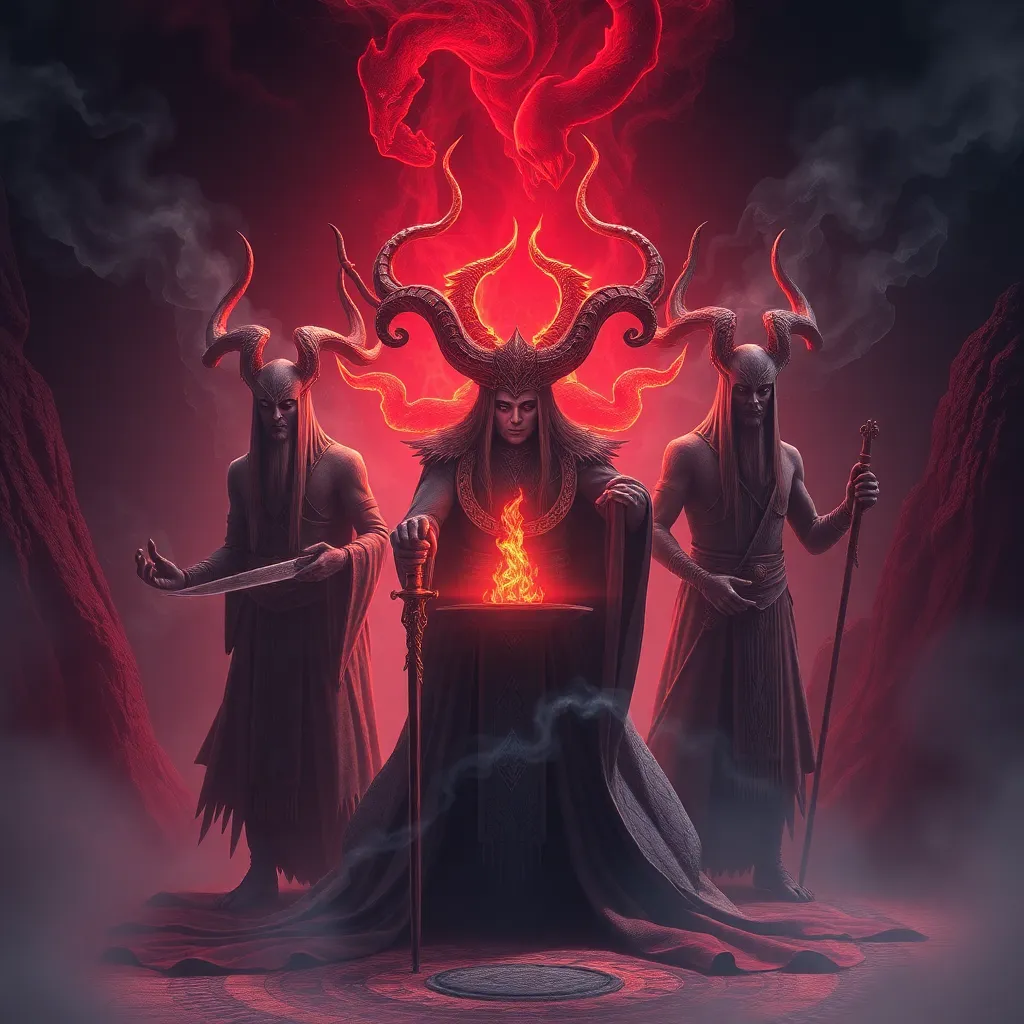The Kitsune’s Transformation: From Wild Animal to Powerful Spirit
I. Introduction
The Kitsune, or fox, holds a significant role in Japanese folklore, embodying a complex blend of characteristics that range from mischievous trickster to wise guardian. These mythical creatures are often depicted as shape-shifters, capable of transforming from their animal form into humans, and vice versa. This transformative aspect of the Kitsune is not merely a narrative device but also a reflection of deeper cultural themes surrounding identity, change, and the connection between the natural and spiritual worlds.
The purpose of this article is to explore the rich history and significance of the Kitsune in Japanese culture, examining its evolution from a wild animal into a powerful spiritual entity that continues to influence contemporary storytelling and spiritual practices.
II. The Origins of the Kitsune Legend
The legend of the Kitsune dates back centuries, with early mentions found in historical texts such as the “Nihon Shoki” (Chronicles of Japan) from the 8th century. These early accounts often portrayed the fox as a creature of both cunning and intelligence, capable of outsmarting humans.
In Japanese culture, wild foxes are regarded with a mix of reverence and superstition. Traditionally, they were seen as messengers of Inari, the Shinto deity of rice, agriculture, and fertility. This historical context laid the groundwork for the Kitsune’s transformation into a revered spiritual figure.
Over time, the Kitsune mythos evolved, incorporating influences from Buddhism and other cultural narratives. As the spiritual dimensions of the fox grew, so did its association with themes of duality, transformation, and the balance between good and evil.
III. The Physical and Spiritual Transformation
The transformation of the Kitsune from a wild animal into a powerful spirit is a central theme in its folklore. This metamorphosis is often depicted in stories where a fox may take on human form, sometimes to seek revenge, other times to offer assistance.
Symbolically, the fox occupies a unique space in various cultures. In many traditions, the fox represents cunning, adaptability, and intelligence. However, it also embodies the potential for mischief and chaos. In Japan, this duality is particularly pronounced, with the Kitsune serving as both a trickster and a guardian.
Shinto beliefs play a critical role in the Kitsune’s transformation. As protectors of Inari, the foxes are revered as spiritual beings that bridge the gap between the human and the divine. This relationship signifies a deep respect for nature and the interconnectedness of life, where the Kitsune serves as a mediator between the two realms.
IV. Types of Kitsune: The Good and the Malevolent
The Kitsune is often categorized into two primary types: the benevolent Inari Kitsune and the malevolent Yako Kitsune.
- The benevolent Inari Kitsune: These foxes are associated with the deity Inari, symbolizing prosperity, fertility, and good fortune. They are often depicted as white or golden foxes and are regarded as protectors of rice fields and agricultural bounty.
- The malevolent Yako Kitsune: In contrast, Yako Kitsune are known for their trickster nature. They are often depicted as mischievous and sometimes malevolent, using their shape-shifting abilities to deceive and cause trouble for humans.
This duality illustrates the Kitsune’s complex nature as both protector and trickster, reflecting the broader themes of good and evil that permeate folklore. The balance of these opposing forces is a significant aspect of the Kitsune’s narrative, emphasizing the moral lessons embedded in these stories.
V. Kitsune in Popular Culture
The influence of the Kitsune extends beyond traditional folklore into modern literature, anime, and film. In contemporary storytelling, the Kitsune is often reimagined, reflecting both its ancient roots and current social themes.
- Literature: The Kitsune appears in various works, from fantasy novels to graphic novels, often embodying themes of transformation and identity.
- Anime: Popular anime series feature Kitsune characters, showcasing their magical abilities and complex personalities, often as central figures driving the plot.
- Film: Kitsune are depicted in films as mystical beings, exploring themes of love, revenge, and the clash between human and spirit worlds.
Modern interpretations of the Kitsune myth often highlight the creature’s adaptability, reflecting contemporary issues such as the search for identity, the balance of tradition and modernity, and the exploration of the human condition.
VI. The Kitsune’s Connection to Nature and Humanity
The Kitsune serves as a bridge between the natural and spiritual worlds, embodying the connection between humans and nature. Many stories illustrate the Kitsune’s interactions with humans, often highlighting themes of respect, caution, and the importance of harmony with nature.
- Stories of interaction: Numerous folktales recount encounters between humans and Kitsune, showcasing the fox’s ability to offer aid or to teach valuable lessons.
- Lessons learned: These narratives often emphasize the need for balance in one’s life, respect for nature, and the understanding that not all appearances reflect true intentions.
Through these stories, the Kitsune serves as a reminder of the delicate relationship between humanity and the natural world, urging a respectful coexistence.
VII. The Kitsune in Modern Spiritual Practices
In recent years, there has been a resurgence of interest in the Kitsune as a spiritual guide. Many practitioners seek to honor the Kitsune through rituals and practices that acknowledge its significance in Japanese spirituality.
- Rituals: Offerings of rice and sake are commonly made to Inari shrines, where Kitsune statues are often found, symbolizing respect and gratitude.
- Cultural appropriation vs. appreciation: As interest in Kitsune spirituality grows outside of Japan, discussions around cultural appropriation versus appreciation have become increasingly relevant. Respect for the cultural origins and significance is essential in engaging with these practices authentically.
This modern spiritual connection allows for a deeper understanding of the Kitsune’s role as both a guardian and a guide, bridging ancient beliefs with contemporary spiritual practices.
VIII. Conclusion
The journey of the Kitsune from a wild animal to a powerful spirit is a testament to the enduring legacy of this mythical creature in Japanese folklore. Its transformation highlights significant cultural themes of duality, identity, and the connection between the natural and spiritual realms.
As the Kitsune continues to inspire stories and spiritual practices in modern culture, it serves as a reminder of the rich tapestry of folklore that shapes our understanding of the world. The Kitsune invites further exploration into its themes, encouraging a deeper appreciation of its multifaceted nature and the lessons it imparts.



